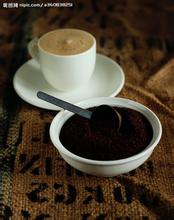Bolivian coffee processing, planting area, Tibica
Bolivia FTO SHG EP
Producing country: Bolivia
Grade: SHG
Planting area: Yonggas
Brand name: Caranavi
Treatment method: wet treatment
Appearance: 2dmax 300grr 18SCR 17-gr.
Variety: Tibica
Note: this is a lively, bright and vibrant coffee. Dry aroma is an unusual nutty aroma, somewhat similar to peanut butter. The wet aroma has aromas of vanilla and flowers. The palate is delicate, with apple sweetness and flavors of chocolate and vanilla.
Dry aroma (1-5): 3.6
Wet aroma (1-5): 3.7
Acidity (brightness) (1-10): 8.8
Taste (layered) (1-10): 8.6
Taste (alcohol thickness) (1-5): 2.9
Aftertaste (residue) (1-10): 8.5
Balance (1-5): 0
Basic score (50): 50
Total score (maximum 100): 86.1
Intensity / main attributes: light intensity / delicate flower and fruit composition balance
Recommended baking degree: city+ or full city+
Contrast: light and lively; flavor close to the Kaddura coffee produced in Panama Bolivia coffee has the advantage of high altitude and excellent coffee varieties, where the traditional Tibica and a small amount of Kaddura are highly valued in the world market.
Bolivia is not a big coffee producer, but the excellent altitude and climatic conditions of the La Paz Mountains make the coffee produced here is of excellent quality. Bolivian boutique coffee is delicate, bright, sweet and fragrant. It is a typical coffee that makes people feel clean and relaxed. The coffee here has subtle fruity aromas such as pears, apples, apricots, oranges and lemons. On the palate, the taste is pleasant with sweet flavors of malt, chocolate and nuts.

Important Notice :
前街咖啡 FrontStreet Coffee has moved to new addredd:
FrontStreet Coffee Address: 315,Donghua East Road,GuangZhou
Tel:020 38364473
- Prev

Classification of Jamaican Blue Mountain Coffee
There are three varieties of coffee in Jamaica: blue Mountain Coffee (Jamaica Blue Mountain Coffee), of which Blue Mountain Coffee and Alpine Coffee are each divided into four grades. From top to bottom in terms of quality, NO.1, NO.2, NO.3 and PB,PB are round beans. According to CIB standards, only coffee grown above 666m above sea level can be used.
- Next

Species morphology of Colombian coffee bean
The main varieties of Colombian coffee are small grains of coffee. Plants are small trees or large shrubs, 5-8 m tall, usually much branched at base; old branches gray-white, nodes dilated, young branches glabrous, compressed. Leaves thinly leathery, ovate-lanceolate or lanceolate, 6-14 cm long and 3.5-5 cm wide, tip long acuminate, acuminate part 10-15 mm long, base cuneate or slightly obtuse, rarely rounded, entire or
Related
- Does Rose Summer choose Blue, Green or Red? Detailed explanation of Rose Summer Coffee plots and Classification in Panamanian Jade Manor
- What is the difference between the origin, producing area, processing plant, cooperative and manor of coffee beans?
- How fine does the espresso powder fit? how to grind the espresso?
- Sca coffee roasting degree color card coffee roasting degree 8 roasting color values what do you mean?
- The practice of lattes: how to make lattes at home
- Introduction to Indonesian Fine Coffee beans-- Java Coffee producing area of Indonesian Arabica Coffee
- How much will the flavor of light and medium roasted rose summer be expressed? What baking level is rose summer suitable for?
- Introduction to the characteristics of washing, sun-drying or wet-planing coffee commonly used in Mantenin, Indonesia
- Price characteristics of Arabica Coffee Bean Starbucks introduction to Manning Coffee Bean Taste producing area Variety Manor
- What is the authentic Yega flavor? What are the flavor characteristics of the really excellent Yejasuffi coffee beans?

